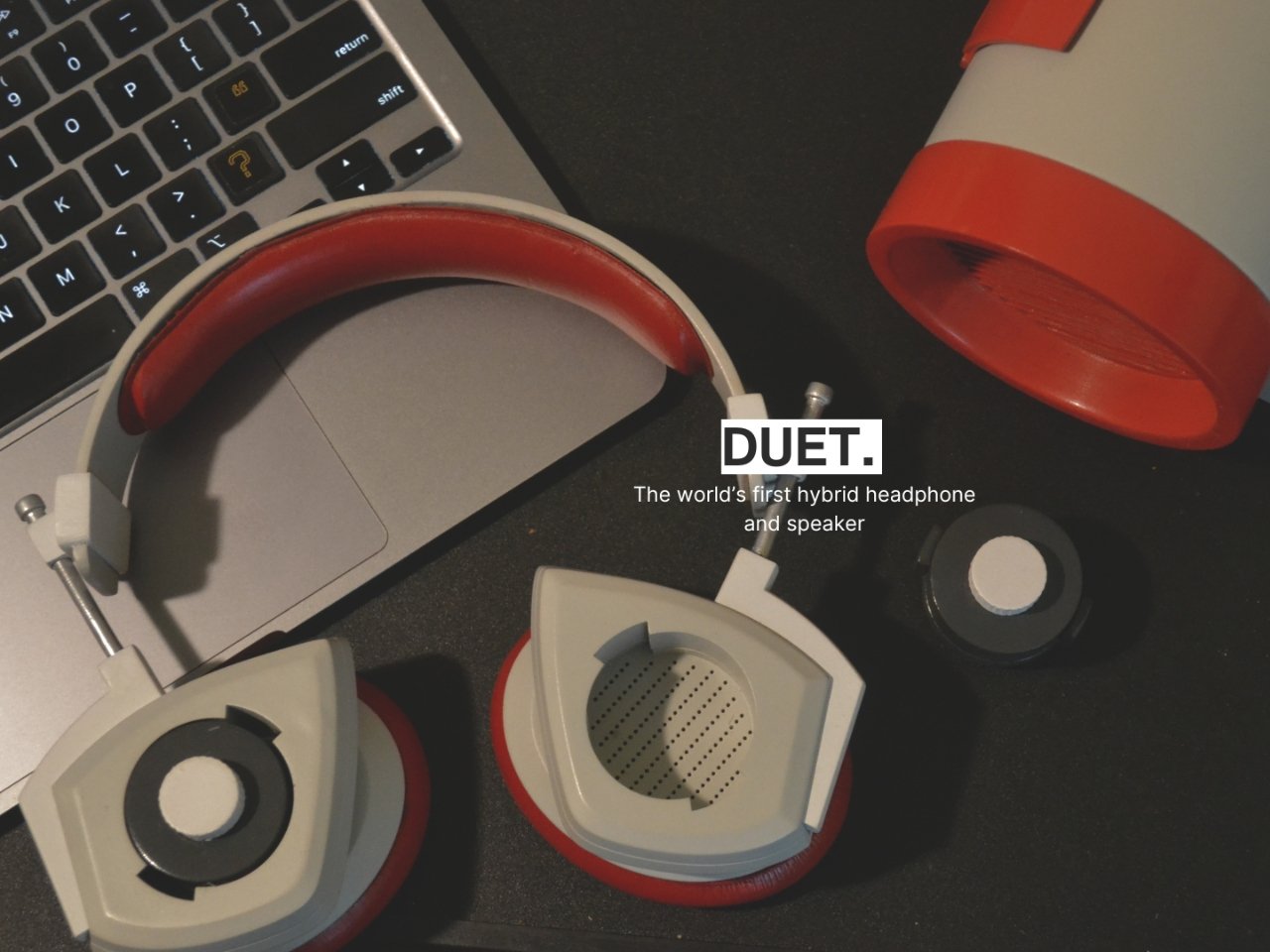Imagine never having to choose between your headphones and your speaker again. DUET is a groundbreaking audio device concept that blends private listening, shared speaker playback, and spatial audio into a single, easy-to-use product. This hybrid approach means you can switch effortlessly between listening modes, whether you’re on the move, relaxing at home, or hosting friends. DUET is designed to simplify your audio setup, save you money, and ensure your music is always with you, wherever you go.
The inspiration behind DUET came from the everyday hassle of toggling between headphones and speakers. As a college student constantly surrounded by music, the creator found it frustrating to keep removing headphones whenever moving from outside to inside or from one room to another. The music never followed, and constantly switching devices was inconvenient. This sparked the idea for DUET, a device that could fluidly transition between personal and shared listening, letting music move with you.
Designer: Ken Sledzinski
At the core of DUET’s innovation are its mini bone conduction speakers. Unlike typical speakers that rely on pushing air, bone conduction speakers transmit vibrations directly through surfaces, turning them into amplifiers. This technology allows DUET to remain compact while still delivering impressive sound quality. The headphone ear chambers are designed with thin walls and scattered holes to dampen the bone conduction effect and keep audio private. When switched to speaker mode, the mini speakers twist and lock into a thicker, hollow housing, which boosts volume for shared listening. The friction fit ensures the speakers stay in place, making the transition between modes smooth and secure.
The design journey for DUET was as unique as the product itself. After identifying the need, the creator spent countless hours sketching different forms, drawing inspiration from classic retro headphones for a bold, distinctive look. Once the core shape and style were nailed down, 3D modeling in Rhino helped refine proportions and make sure the design would be manufacturable. Visualization tools like KeyShot helped finalize color and material choices. Prototyping was all hands-on as he used components from a PocketTunes bone conduction speaker. He 3D printed and tested various versions of the ear chambers and speaker housing, adjusting infill and tolerances to perfect both the look and sound.
What truly sets DUET apart from other audio products is its versatility. Most devices force users to pick between headphones for solo listening or speakers for group enjoyment. DUET brings both together, offering three listening modes: private, speaker, and omnidirectional spatial audio. Its bone conduction technology means the surface the speaker rests on can dictate volume and sound character, making DUET adaptable to any environment. Beyond its technical features, DUET’s design language is bold and expressive, standing out from today’s sea of minimal audio gadgets.
Looking ahead, the next step for DUET is to bring together a team of engineers and audio experts to refine the product and prepare it for market. The goal is to improve audio quality, address technical fine points, and eventually secure a patent for this innovative concept. DUET has the potential to redefine how we think about personal and shared audio, making switching between worlds as easy as turning a dial.
The post DUET concept is a hybrid headphone and speaker in one first appeared on Yanko Design.

